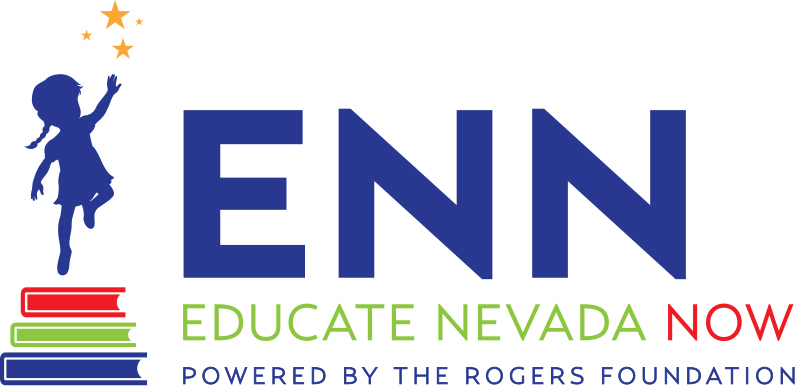“Covid Slide” Highlights Long-Term K-12 Issues
A recent article in the Nevada Independent highlighted an alarming concern with the academic achievement of our students. Though reading scores will likely remain steady, math proficiency is projected to take a steep dive. Projected proficiency rates based on 8th grade math MAP tests have dipped to only 11% of students likely being proficient by Spring in the Clark County School District. The projected scores stem from recent MAP testing that serve as an indicator of how students would perform on the SBAC, the state standardized test to measure proficiency.
There are a lot of factors that play into these dismal scores, computers crashing during the exam, wifi not working well, students struggling with technology and some unavailability of hands-on parents or tutors.
Lower scores are an expected effect of Covid, referred to as the “Covid Slide,” which is a set back for already low proficiency levels.
The 11% math projection is an aggregate of the unsuccessful AND successful exams, yes even the ones where parents might have assisted students (which is what we hear from some educators).
More importantly, poor achievement results are NOT going away after Covid. Students were struggling before Covid with only 30% of 8th graders proficient in math state standardized exams.
When Covid is somehow managed and students are back in school they will be in a better, but still not a promising situation.
This is the reality before Covid:
- Nevada students have the worst ACT scores in the country, meaning they are not graduating ready for college.
- Only 30% of 8th grade students were found to be proficient in math according to state standards.
- Less than 50% of Nevada students are considered to be proficient in math and reading in 3rd, 4th, 5th, 7th and 8th grade levels based on the state’s own standards. Meaning half of Nevada students enter high school without the necessary reading and math skills.
- The state averages only 1 counselor for every 1,000 students, when the recommended ratio is 1 to 250. (National Association of School Counselors).
- Nevada has the largest student to teacher ratios in the country.
What does recovery look like for our state and our students?
Because of our high reliance on a narrow set of tax revenues that highly fluctuate with the economy, (35 percent of Nevada’s revenue comes from the retail, tourism and gaming industry), Nevada is among the states that has been hardest hit financially by the pandemic.
As a result, even when our kids are able to attend in person, the same minimal level of services they had before will not be available since Nevada schools have already faced significant cuts to K-12 public schools – upwards of $160 million in just the most recent special session.
Cuts this summer include but are not limited to the following:
- SB178 – tutoring, individualized learning opportunities and other supports for students.
- English-Learners and at-risk students.
- Read by 3rd Grade – resources for students struggling to read.
- Teaching incentives – to get licensed teachers to teach at low income Title 1 schools.
- Class Size Reduction – funds to decrease class sizes.
Mental health services, tutoring to “catch up,” teaching aids and other resources will not be available in the same manner, even though the need for them will be greater. Class sizes will continue to be among the largest in the country.
Even in “good times” Nevada K-12 has been towards the bottom in funding and academic achievement.
Here are the facts. We rank 45th in K-12 funding, we rank 47th in A Child’s Chance for Success, we are ranked 50th in education by the Quality Counts Report and we also rank 43rd in economic diversity. According to a report from Wallet Hub, Nevada ranks 50th in share of STEM professionals and 43rd in our share of educated professionals.
Last in education, last in ACT scores and largest classrooms in the nation are not really selling points to recruit businesses to Nevada. Unless we fix our state of education and invest in our students, profitable high-tech and other STEM businesses will not invest in Nevada.
As we leave 2020 behind and head into another legislative session early next year, we should support legislators that put our state on a path to be a more resilient, strong and stable Nevada where two out of three eighth graders failing math is not the pre-Covid Nevada normal.
Vote!
Tuesday, November 3rd is the last day to vote in this very contentious and important election and although the presidential race takes center stage it’s also important to vote in our state and local elections. Education is one of the major services almost entirely funded by the state. We ask that when voting you chose candidates who support our public schools. To research candidates for K-12 and higher ed positions visit the 2020 Education Voter Guide put together by several key education partners. Find your designated polling place and other necessary information at Vote.org.
Key information:
Polls are open 7 a.m. to 7 p.m. (As long as you are in line by 7 p.m. you can vote).
You can register to vote in Nevada at your polling place even on Election Day.
Bring an official photo ID including but not limited to a State Identification Card, Sheriff’s Work Card, Armed Forces I.D., Student I.D., U.S. Passport.

0 Comment